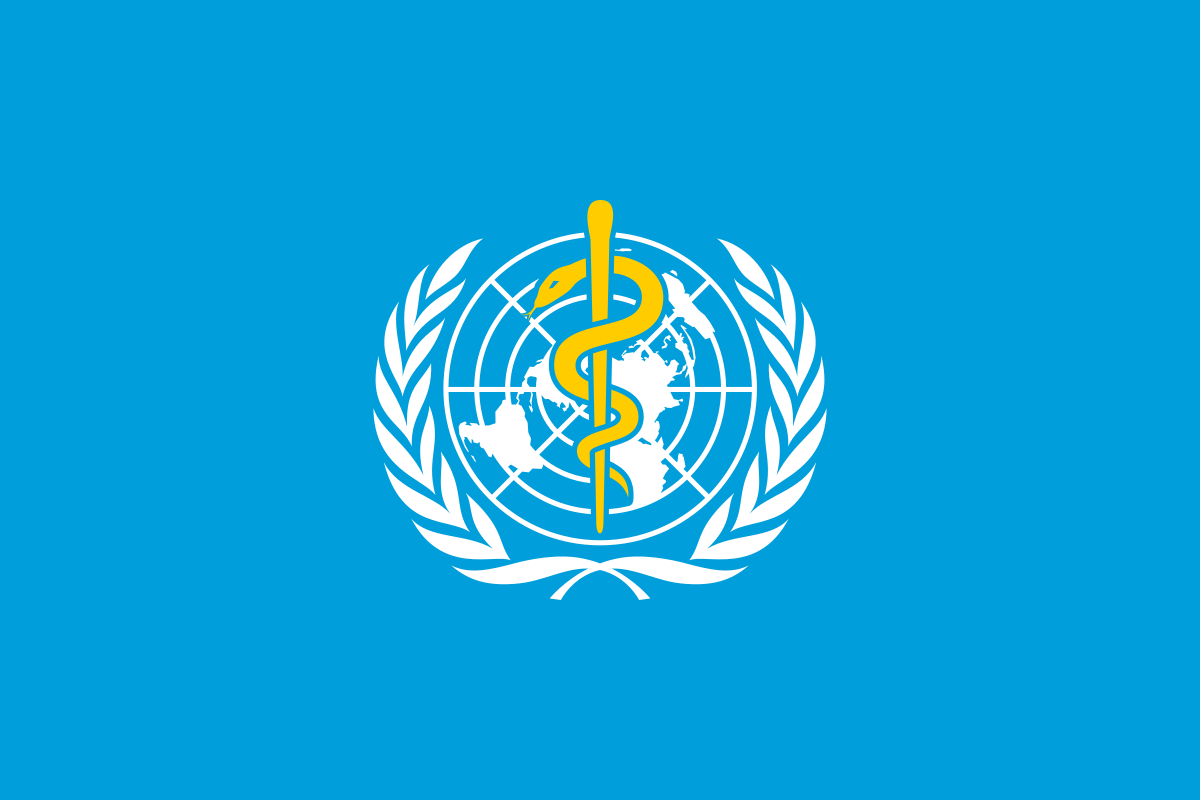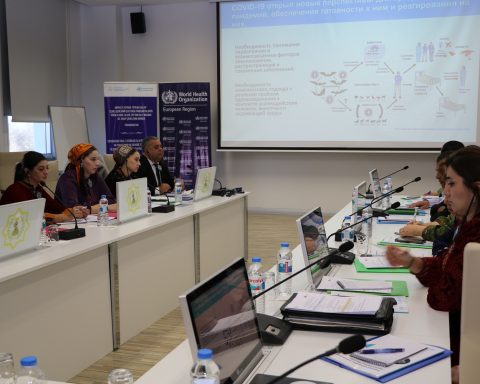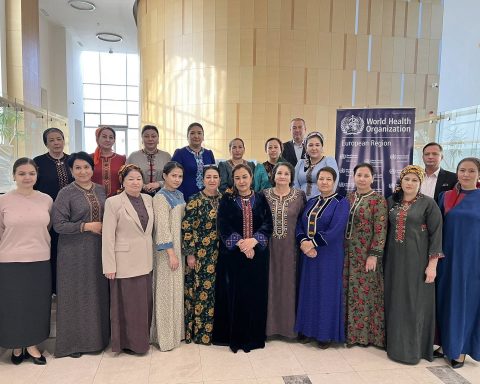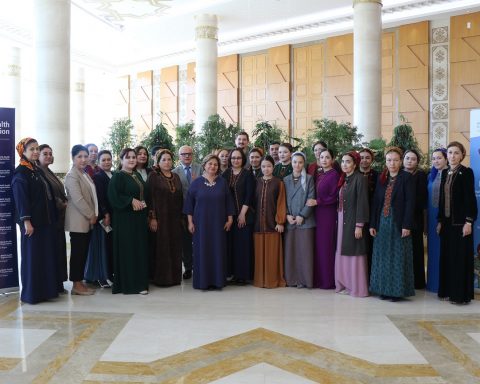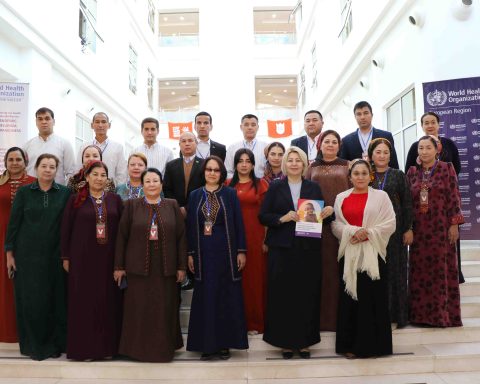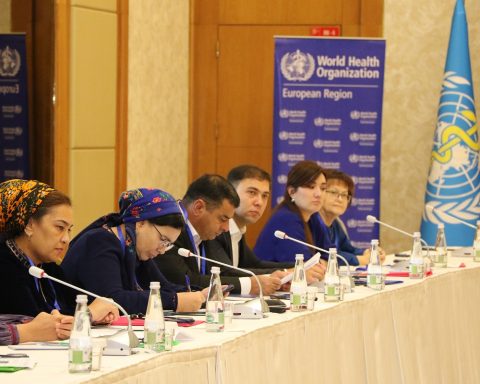OP-ED by Dr Hans Henri P. Kluge, WHO Regional Director for Europe and Central Asia
Twenty-four years ago, Maria Godlevkskaya was in a coma in a hospital in Russia, her immune system having failed without treatment for her HIV. She had been diagnosed with the virus five years earlier. Fast forward to today, and not only is Maria leading a full and healthy life, she also hasn’t passed the virus on to her son.
Back when Maria was diagnosed, at the turn of the millennium, HIV treatment was still largely in its infancy and not widely available. For millions of people around the world HIV was a death sentence – and still remains life-threatening for millions more today. Since the beginning of the epidemic in the 1980s, HIV/AIDS has claimed more than 40 million lives, and that’s probably an underestimate. Maria considers herself extremely lucky. She puts her survival down to two things: access to high-quality care and acceptance from her doctors, family, and friends.
The WHO European Region, covering 53 countries across Europe and Central Asia, has made significant progress in tackling HIV. Medically speaking, we have all the tools we need. Once a person accesses HIV testing, health systems in our region can diagnose (some faster than others) and get people onto treatment which is almost always available and offered free of charge.
Why then are only 72% of people living with HIV (PLHIV) in our region aware of their status? 50% of them receive a late diagnosis. We are not managing to reach people in a timely way, and this trend has not changed for 10 years. In a highly developed Region with high clinical standards, what is going wrong?
The sad truth is the biggest and most stubborn barrier to ending AIDS is not medical. It’s the persistent HIV-related stigma and discrimination and criminalization of HIV transmission and behaviours, that derails prevention efforts and prevents people from seeking diagnosis and care.
In the European Region, where advances in treatment and care have increased life expectancy for those living with HIV to a point where it’s effectively a chronic condition like diabetes or hypertension, we must urgently address the pervasive stigma that continues to prevent the Region – indeed the world – from reaching the global target of ending AIDS as a public health threat by 2030.
Stigma and discrimination have long created barriers. For example, more than one in five (21%) PLHIV report being denied healthcare in the past year. Meanwhile, stigmatizing attitudes contribute to physical and economic violence against PLHIV, affecting their education and employment opportunities.
Discrimination can come in many forms, devastating lives, and eroding the hard-won trust in health workers and the health system, which can take years to rebuild.
Vulnerable populations that remain at the heart of the epidemic often bear the brunt of society’s intolerance.
I have heard countless stories.
For example, in one country, a 19-year-old woman, who was born with HIV, faced bullying from her community, often being ‘outed’ as HIV-positive without her consent.
Naming and shaming countries or governments or health workers is not helpful, because discrimination can – and does – rear its head in every country and society, even those perceived as open and liberal.
We must stand up for PLHIV and challenge the ingrained attitudes and structures that can make their lives so difficult. Change is possible, but only if we fight for it.
To end AIDS as a public health threat by 2030 we need to:
- Put people first. We must make our health and community systems accessible and acceptable to those most marginalized.
- Raise awareness and dispel lingering myths about HIV. Education remains our most potent weapon against stigma, including age-appropriate comprehensive sexuality education that provides young persons with a foundation for empathy, life, and love.
- Advocate for policies that protect the rights of PLHIV and fully dismantle discriminatory laws and practices.
- Create safe spaces where individuals can share their experiences without fear.
- Encourage regular testing and early treatment. When we normalize HIV testing, along with testing for other sexually transmitted infections, we reduce stigma.
- Highlight stories of courage, resilience, and triumph over stigma. Let us celebrate the strength of those who have overcome adversity and allow them to flourish as champions for change.
Not too long ago, I had the privilege to speak to Maria – who now lives in Germany – about serving as an advocate for people who live with HIV. She turned her HIV diagnosis of more than two decades ago into a calling, setting up Russia’s first network to support women affected by the virus. Her strength and courage continue to inspire me, and her story – along with so many others – should give us all hope for a better future, even in the face of formidable challenges.
“My first visit to the AIDS center in Saint Petersburg was filled with attention, care, and sympathy. From those early days both my doctor and my family treated me with respect,” she told me. “I would like it to be this way for every young person who joins our ranks. I want everyone who is scared, anxious and struggling to understand, to have access to a peer counselor, so that the path out of the darkness of fear, loneliness and uncertainty can be walked hand-in-hand together, towards the light of knowledge and self-confidence. An HIV diagnosis doesn’t make a person a mistake. And I wish this feeling and knowledge for everyone living with HIV.”
Keeping the promise of ending AIDS is not just a medical objective; it is a human rights imperative.
We can be the generation that eradicates HIV stigma, embraces compassion, ensures full access to diagnostics and treatment, and paves the way for a healthier, more inclusive world. Only then will we end AIDS – for once and for all.
